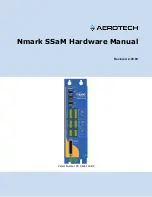
81
Door Latch
A positive or full locking latch is not permitted because of code violations.
Each latch has a rating by pounds of pressure, yet will prevent the door
from opening during travel.
Operation in Transit
During camping or parking, the refrigerator MUST be level for best
operation. While traveling, the up and down hill movement of the coach,
will not affect the performance of the refrigerator AS ALL chemicals in
cooling unit ARE IN MOTION.
Defrosting and Cleaning the Refrigerator Interior
For this function, refer to the owner’s manual supplied by the
manufacturer.
Operating the Refrigerator Controls
In order for proper operation, and to achieve proper cooling, 12-volt power
MUST be present at the power supply board for it to function. Power
comes from solid state converter, battery, or vehicle battery.
Two types or systems are being used in current production, in both you
turn switch to “ON” and it will operate.
For both N7 and N8 models, with absorption cooling, there will be a
“V”
or “X” behind the number. “X” means the system will choose “AC” 120-
volt first even with propane available. To change temperature in the
refrigerator, change the number of snowflakes you see. More snowflakes
you see, the colder the refrigerator will be.
“V” will also switch to 120-volt first, however, to change temperature you
must physically move the thermistor and wire from 10th position, left 2 or
more fins for colder operation, inside the refrigerator. There is NO
thermostat in the “V” model.
On the 12-volt compressor type, to change inside temperature of the
refrigerator, move slide switch in freezer compartment in direction you
wish to go, colder or warmer. Also turn thermostat in direction desired.
Additional information will be found in the manual supplied by the
manufacturer of the refrigerator for all units.
Outside Kitchen (optional)
Using this exterior kitchen will eliminate traffic inside your camper and
Do not use undue force or jerking action when opening the
refrigerator door. Air temperature differences can cause a
partial vacuum within the cabinet, requiring a firm, but steady
force to open the door. A sudden jerk could cause door
damage or personal injury.








































